Game one of the service academy doubleheader is in the books and it wasn’t pretty. The Irish will look for redemption on Saturday in the Shamrock Series game against Army.
Last week we went through the basics of Navy’s triple option offense. At a high level, both Navy and Army run very similar offenses. Navy coach Ken Niumatalolo and Army coach Jeff Monken both coached under current Georgia Tech head coach Paul Johnson. Niumatalolo played quarterback under Johnson at Hawaii then served as a GA at Hawaii and then as an assistant coach at Navy. Monken first hooked up with Johnson at Georgia Southern and then followed him to Navy. Monken coached with Johnson at Georgia Tech for two years before taking the head coaching job at Georgia Southern before moving to Army.
Clearly, both Niumatalolo and Monken were heavily influenced by Johnson’s brand of option offense. There are a lot of similarities in the schemes of both schools, but there are some differences too.
Formations
Like last week, we’ll start by looking at Army’s base formations, because that’s where a lot of the differences lie.
Army’s base formation is similar to Navy’s except they use a tight end instead of a second wide receiver.
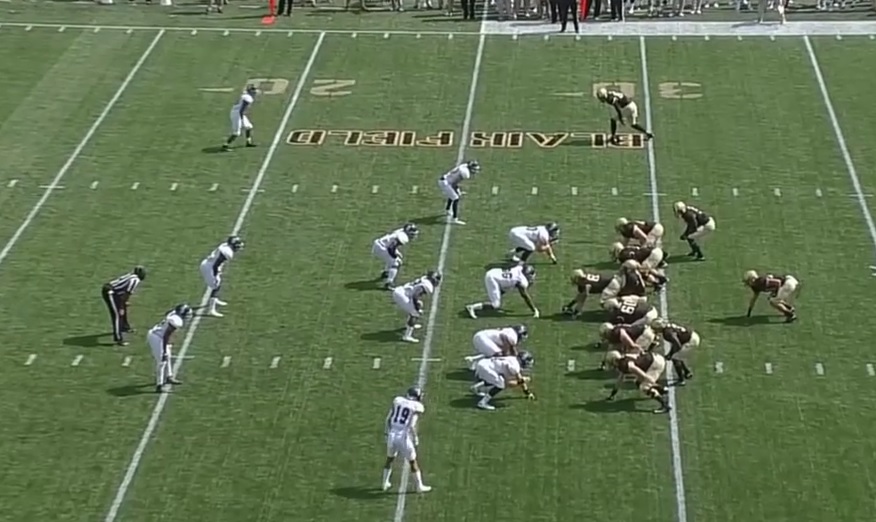
This speaks to the biggest philosophical difference between Army and Navy. Army makes extensive use of the tight end, while Navy doesn’t even have a tight end listed on their roster. We’ll get into playcalling in the next section, but while Navy wants to spread teams out and hit the edges, Army likes to compact things and play the game between the tackles.
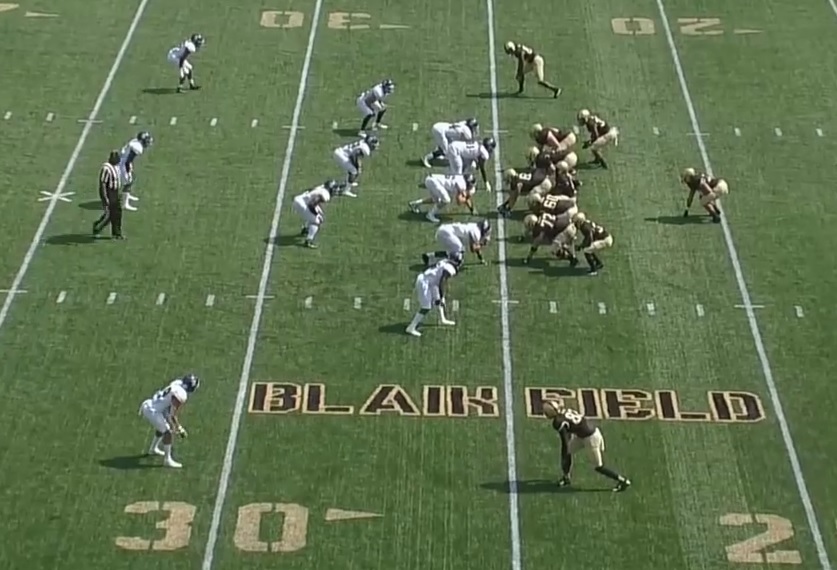
Army still uses the traditional spread/flexbone formation, but not nearly as much as Navy.
Army also uses some “nontraditional” formations. Here they are in a pistol flexbone. Notice the addition of the tight end.
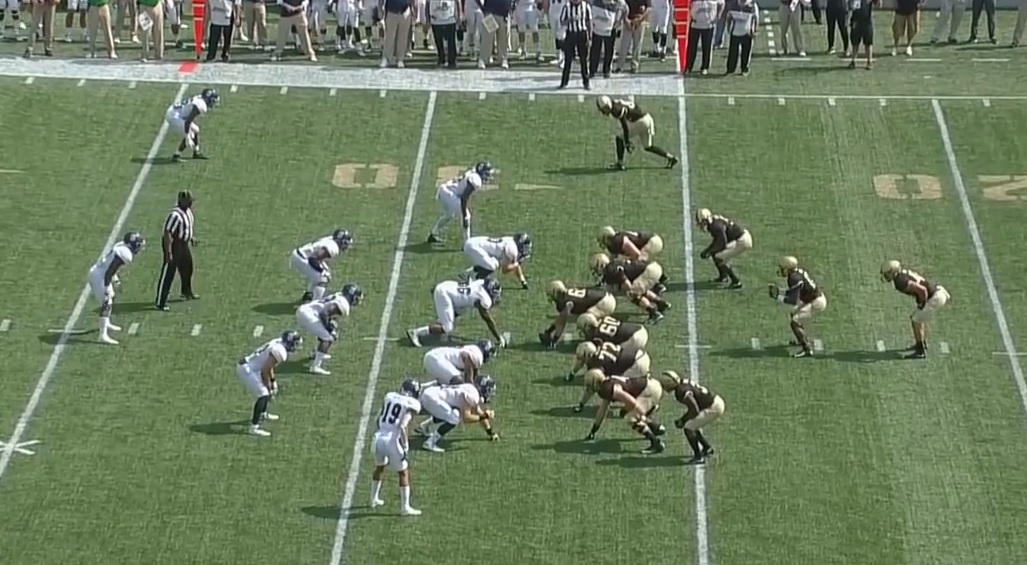
Army will typically run a speed option from this formation. I don’t think I’ve seen them run a traditional triple option from the pistol.
And here they are in the wishbone.
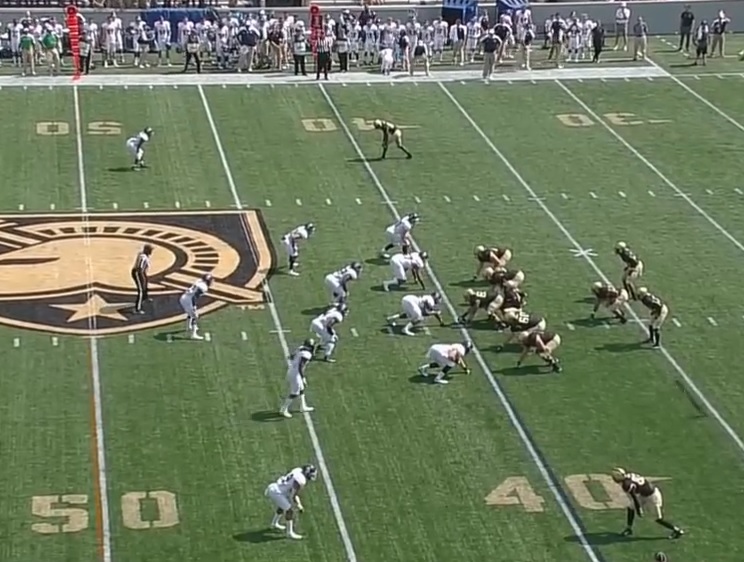
I think this is just a changeup to throw at defenses. I don’t think I’ve seen anything special run from the wishbone.
Playcalling
As I mentioned above, Army’s offense is more about smashing you in the head repeatedly than getting the ball out in space. We’ll look at two plays that illustrate this point.
The Dive
First, let’s look at a simple dive to show how Army’s use of the TE can create holes for the fullback.
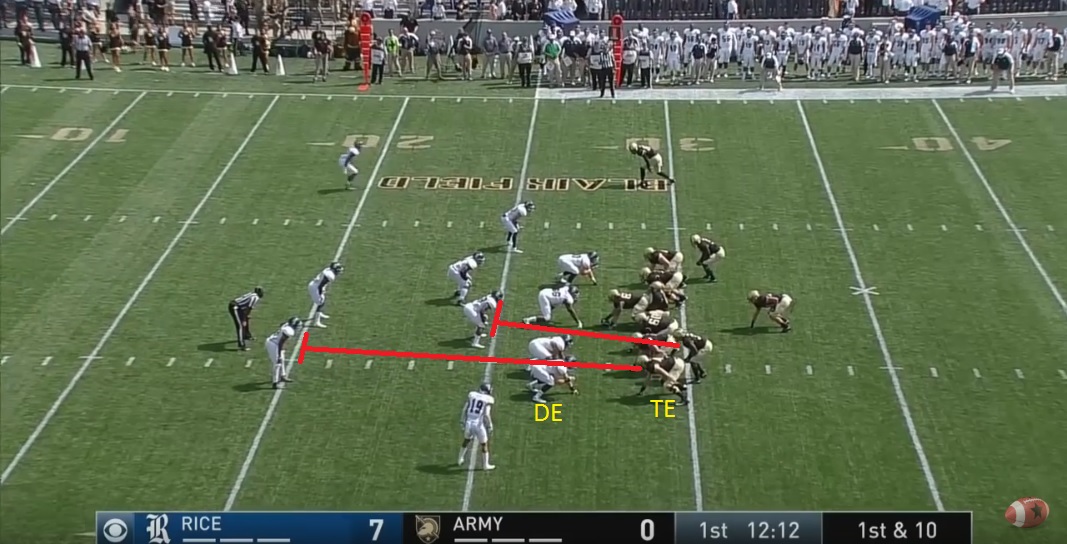
The first thing to notice is the defensive line. Rice seems to have a pretty standard odd front with the center and two offensive tackles covered by defensive linemen. But they also included another defensive end over the tight end, likely to help control the edge on outside runs.
But when Army hands off to the fullback, that end is too far outside to make a play. That allows the offense to leave him completely unblocked and free up the slotback to block a linebacker and the tight end to block a safety.
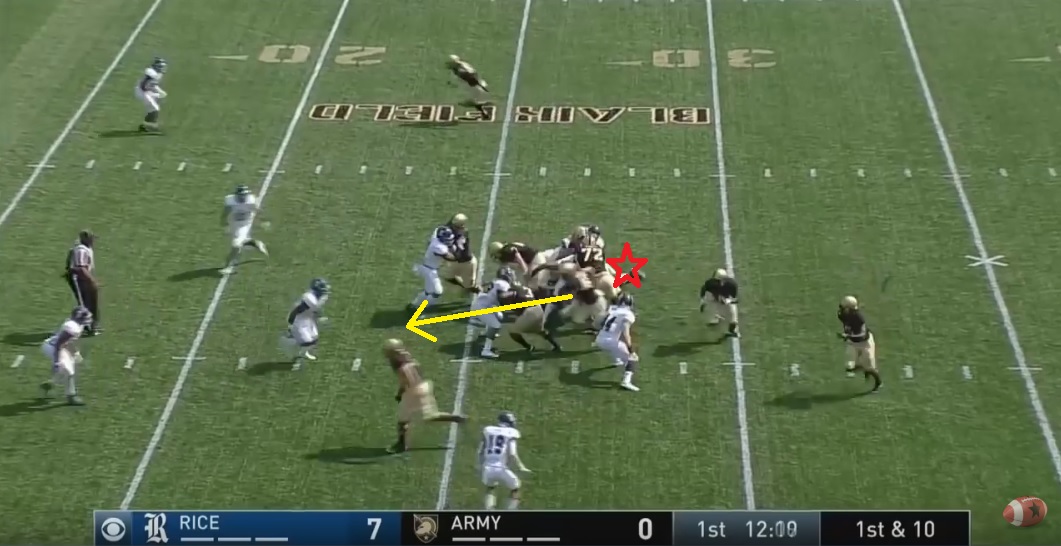
The defensive end (red star) is no position to stop the fullback. In fact, he fell for the triple option fake and attacks the quarterback. The fullback runs right by him, behind the block by the slotback.
Keep an eye on that safety on the 22 yard line…
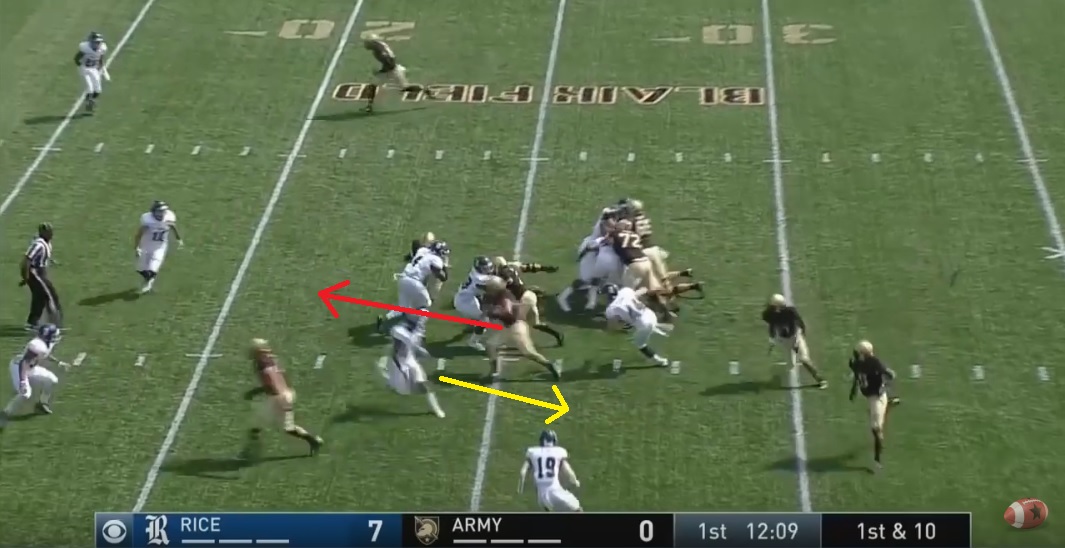
Remember last week when I said the dive play can punish defenses for playing undisciplined? Here’s another example. The safety was so intent on stopping the option that he ran right past the fullback.
The Midline
This play serves as a good example of Army’s bludgeoning style of offense.
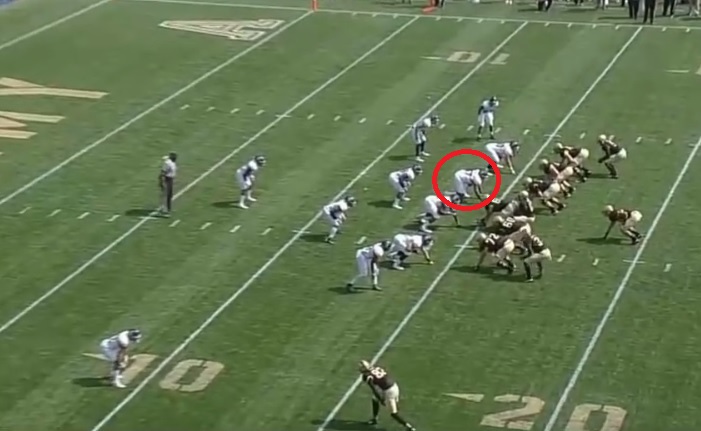
The play is a midline double option. The defensive tackle is read and the QB either hands the ball off to the fullback or keeps it himself up the middle. But the way Army runs it, the quarterback will have three lead blockers.
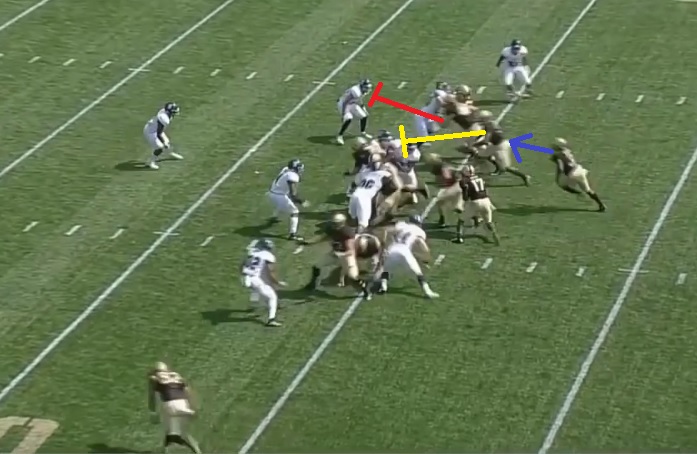
The tight end (red line) loops around the offensive tackle to block the outside linebacker. The playside slotback (yellow line) leads through the hole to block the middle linebacker. The trailing slotback (blue arrow) will also lead through the hole to block the safety.
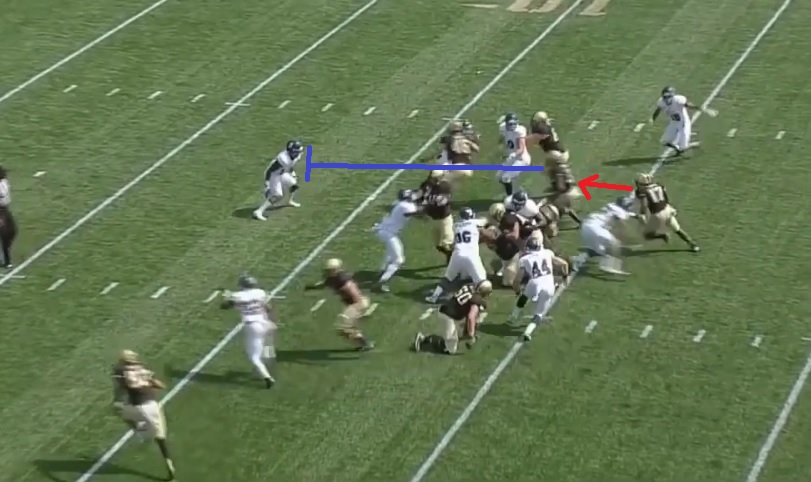
The tight end and slotback open a hole for the QB and the other slotback (blue line) runs through to the safety. If it’s possible to run a MANBALL option offense, this is pretty much the definition.
Wrapping Up
I guess you can look at this game in two ways. If you’re a glass half empty kind of person, then the defense was so bad last week that there’s no reason to expect things to suddenly get better. But if you think the glass is half full, then there’s nowhere for the defense to go but up.
Army probably isn’t as good as Navy, but they have to be licking their chops after seeing the effort Notre Dame put out last week. This would a huge statement win for Monken and Army. For Notre Dame, the Navy loss was an embarrassment, but a loss to Army would be an outright disaster.

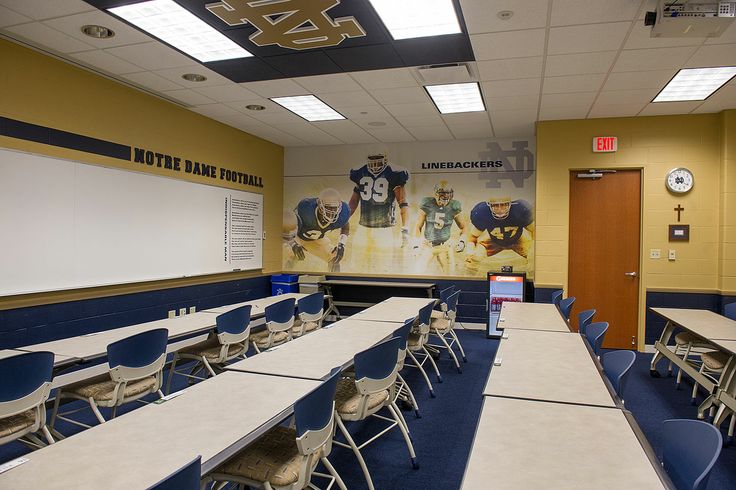
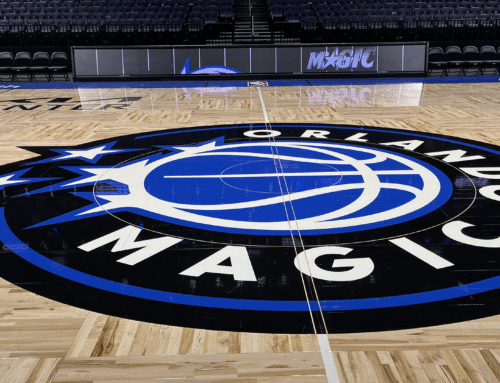
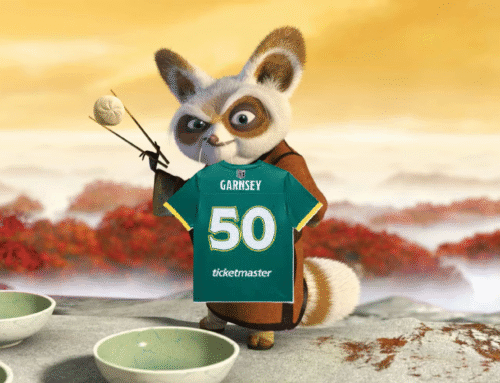
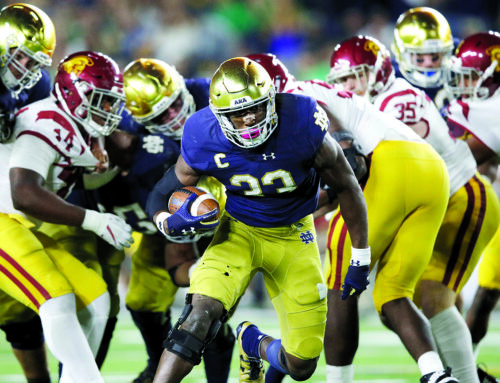
It looks like you are saying Love did not do a good job but Kelly praised him. I presume you are right.
No, I’m saying I have no idea if Love played a good game or not against Navy. I just happened to pick out one particular play where he did not do his job. I’d have to go back and rewatch the game to tell you whether Kelly was right or not.
Shout out to Army’s stencil field numbers.